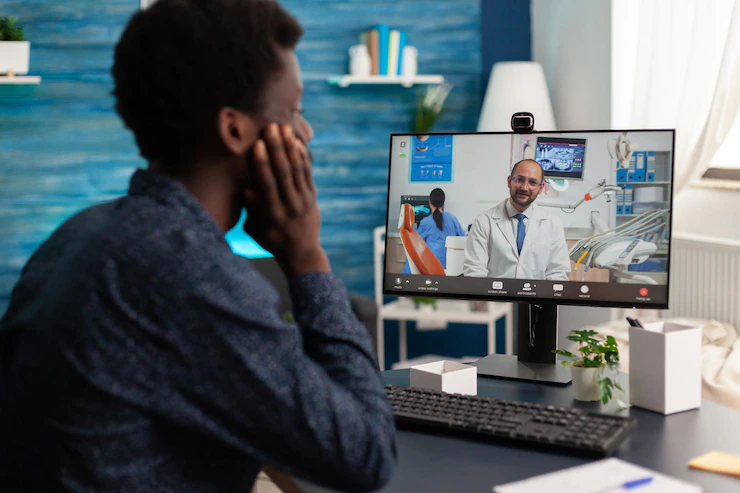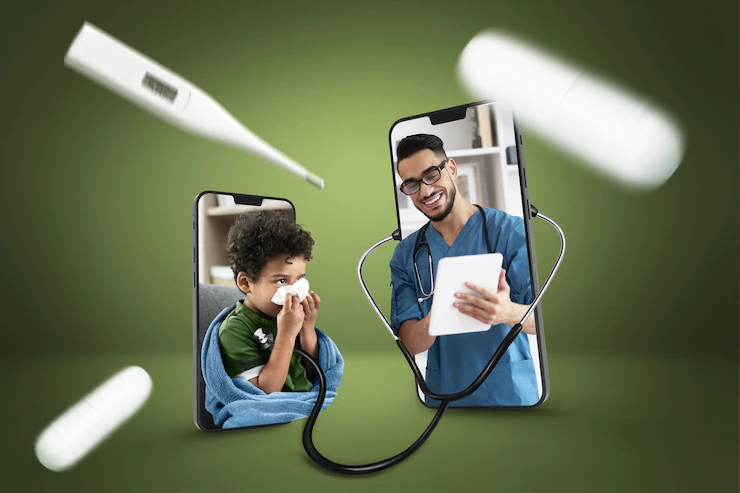Telemedicine practice skyrocketed during the Covid era, but remote healthcare was on the rise even before that due to a growing elderly population in developing countries, an increase in diagnoses and volume of chronic illnesses, a shortage of medical personnel, and improved technology.
According to Grand View Research, the global telemedicine market will grow at a 22.4% CAGR between 2021 and 2028.
You can be a part of this growth too, by acquiring a telemed tool and incorporating the same with an EHR solution. Telemedicine is the future of healthcare. Today, over 75% of hospitals use video and other technology to connect with patients remotely.
This assists patients in dealing with the issue of 57.8% of physicians operating outside of the central region, causing them to travel long distances to access healthcare. In this blog, we’ll help you understand how telemedicine is shaping the future of the healthcare industry along with how you can implement the same into your practice.
Before we begin, let’s quickly walk you through what is a telemedicine service.
While remote patient monitoring and videoconferencing are the most commonly used methods of consultation, other tools such as phone calls, emails, text or instant messaging apps, and even health portals can be used.
There are a ton of myths out there concerning the practice of telemedicine in local clinics and hospitals. Here we’ve highlighted a few to make your understanding better.
Doctors around the globe did not see worse outcomes, higher costs, or patients who needed more in-person follow-up. Of course, some challenges needed to be dealt with in the beginning but once acquainted with the service, there’s no going back.
We also found no evidence of overuse. This is good care, and it is fair to vulnerable populations. The doctors had a huge reach with a small team, extending care to patients in parts of the state where high-quality health services are scarce at best.
Patients do have some major concerns regarding the quality of care they’re going to receive. A common question pops out, “What if, we might not get the best care that we could get in person.”
This can also ease the pain of physically disabled people or elderly people by providing them instant access to healthcare services.
As the patients do not have to travel miles to reach the hospital or clinic, they can utilize this time for any other task.
Similarly, the effort and time spent commuting to and from a healthcare facility can be used to engage patients in more rewarding and relaxing activities.
The healthcare industry is close to a $3 trillion industry. But, even more shocking, up to 25% of that figure is avoidable. While a late diagnosis of certain diseases accounts for a significant portion of this, administrative costs also play a role.
There’s also the issue of clinics and hospitals being able to accommodate more patients due to the scalability and versatility of telemedicine, which helps generate more revenue.
There’s a lot of hustle-bustle during in-person visits during rush hours. Patients also resist sharing much when there’s not enough space to open up and the doctor is in a hurry.
The lack of personalization is what causes that disruption to begin. Today’s consumers have almost nothing in common with those of 20 or 30 years ago. The modern consumer expects more and prefers a level of personalization in all interactions.
These interactions will inevitably result in more comprehensive patient information and a stronger doctor-patient bond, laying the groundwork for increased patient engagement and satisfaction.
With all of the talk about cutting costs and expanding access to healthcare, it’s easy to overlook the fact that telemedicine can also improve treatment quality. For example, it allows doctors and other staff to check in on patients regularly to ensure everything is fine.
Know the pricing now, and start your journey today! Get an exciting free demo to get a hands-on experience.






